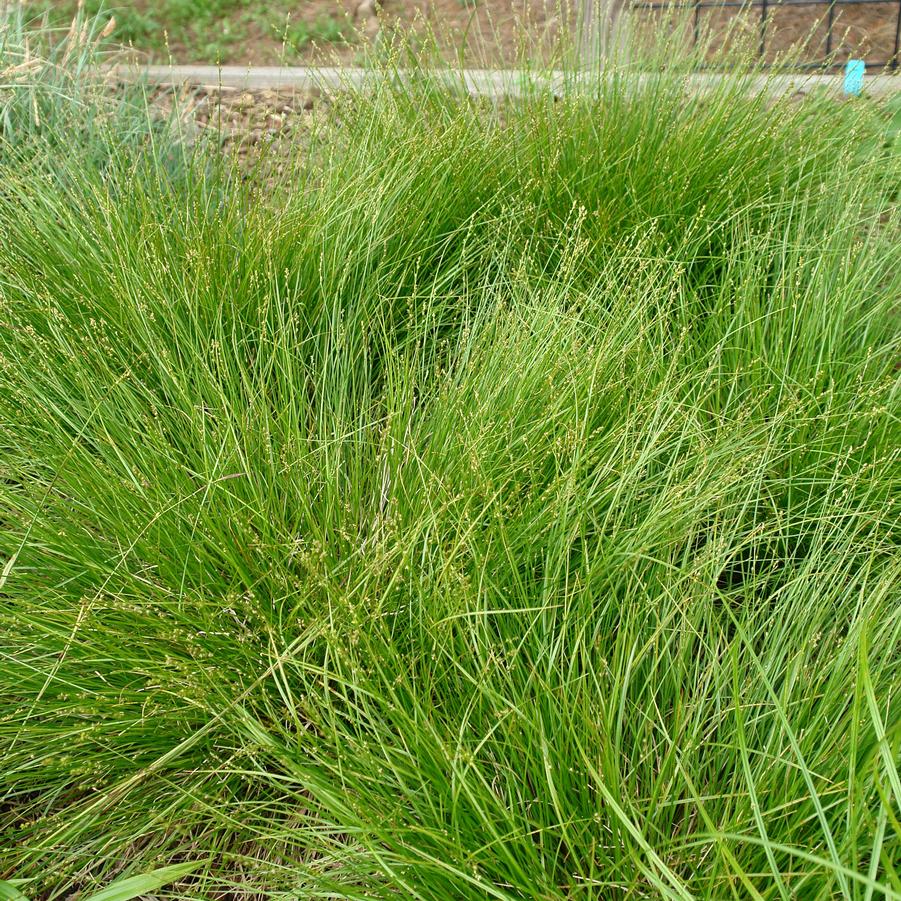





Plant Calculator
Enter the approximate length and width of the area you will be planting and click 'Calculate' to determine how many Carex radiata you will need.
Correct and successful spacing is complex and depends on project conditions. We encourage you to call us at 877-ECO-PLUG for project specific recommendations and further assistance.
Carex radiata
eastern star sedge
- Category: Grass, Carex, Native
- Hardiness Zone: 4-8
- Height: 1-2 Feet
- Spread: 1-2 Feet
- Spacing: 10 Inches
- Bloom Color: Green
An attractive native sedge that forms dense tufts of foliage reaching 1–2' in height with an equal spread. Inflorescences range from 1-3" in length; blooming late spring. Very adaptable, dappled sunlight to medium shade, moist to mesic conditions, and a rich loamy soil with abundant organic matter. Incorporate with native ferns or spring ephemerals like Mertensia virginica. Seeds are enjoyed by various songbirds.
Click here to download technical information for growers:
Wetland Indicator Status
| • | Falcutative (FAC) |
Plug Type
| • | Landscape Plug™ |
For Animals
| • | Deer Resistant |
Propagation Type
| • | Vegetative |
Grass Type
| • | Cool Season |
Additional Information about Carex radiata
An attractive, native perennial sedge that forms dense tufts of foliage reaching 1–2' in height with an equal spread, Carex radiata is a true performer. Carex radiata inflorescences range from 1-3" in length, blooming in late spring. It is a very adaptable plant with high ornamental value due to its fine textured foliage and ability to withstand clay soils. Wonderful foil to native ferns or spring ephermal such as Mertensia virginica, mayapple, or Stylophorum diphyllum, we highly encourage its use as a groundcover and in shady spots in a rain garden.
Eastern star sedge grows in dappled sunlight to medium shade, moist to mesic conditions, and a rich loamy soil with abundant organic matter. Native to North America, from the east coast out to Nebraska, it grows in deciduous forests and shady ravines. While this sedge can tolerate deep shade, its robust appearance and full growth will be hampered.
Part of the joy of growing sedges are exploring their limits and their unique characteristics. Carex radiata is wonderful pushed to a bit more sun as long as moisture needs are met and is often confused in appearance and cultural conditions with Carex appalachica. Seeds are enjoyed by various songbirds as well as a great habitat for local insects which the birds then feed on.
Growing & Maintenance Tips for Carex radiata
To maintain tidy appearance and lush growth in the garden, cut back in early spring or late winter. The ideal growing conditions include dappled sunlight or partial shade. While plants can tolerate full shade, they may become leggy and spread more slowly. In garden settings, it is best to cut plants back to the ground in late winter before new growth emerges.

